Private Elementary Schools
Paying for a private elementary school education places a substantial burden on families, especially when one considers that the corresponding public education is essentially free. Nonetheless, many parents believe a solid, private education for their children is worth the expense, giving students the artistic, religious, or personal attention they might not find elsewhere.
Tweet this!
Discover the Best Private Elementary Schools! The schools on this list each have their particular appeal. A reasonable tuition may be the crucial consideration for some parents (annual tuitions on this list range from $5,000 to $50,000 annually). Small class sizes and personalized attention may be crucial for others. Some families look for academic distinction, or a way to escape bullying, specialized education within a certain field, or a place where their children will be appreciated and encouraged.
Ranking criteria include the following:
- The schools must have at least three of the six grades (first through sixth grade) that are traditionally categorized as elementary-level grades.
- They must exceed nearby public schools in course selections and success.
- They must have a reputation for producing students who are well prepared to take the next steps in their education.
- Though they are organized as businesses, the schools must have a reputation for treating families with fairness and compassion.
- They actively seek to treat parents as partners in the educational process.
- They openly and regularly celebrate the students and their accomplishments.
In determining whether and the degree to which these criteria were met, we did extensive research on these schools, which included finding and evaluating parent and student reviews.
Finally, we decided to put a premium on geographic diversity in the selection of schools. Rather than focus on a few high-density population centers with a large concentration of private schools, we felt it important that all regions of the country be represented. Here, then, is our list of the best private elementary schools across America's full length and breadth.
The Best Private Elementary Schools in the U.S.
1 The New School
(Fayetteville, AR)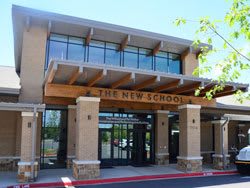
On a 26-acre campus with an amphitheater, certified wildlife habitat, trails, and outdoor classrooms, children in nursery school through eighth grade enjoy a varied STEAM (science, technology, engineering, arts, and math) curriculum. Students in grades one through eight each have computer access. In nursery and preschool, the young students have a dedicated indoor gym, and physical education begins at age three. There are four playgrounds and four school buildings. The New School has over 350 students, 52 part-time teachers, and 63-full time teachers.
Founded in 1971, the school is accredited by the Independent Schools Association of the Central States, the Arkansas Nonpublic School Accrediting Association, and the Arkansas Better Beginnings: 3-Star.
The lower school is comprised of first through fourth grade and technology is integrated into every phase of learning. Students are grouped for literacy and math training according to ability, so that all students can succeed and advance to their fullest potential. Students are given standardized tests to measure learning and their scores exceed the scores of students regionally and nationally. Students have in-depth study of vocabulary, phonics, and spelling, as well as frequent assessment of reading ability with the Developmental Reading Assessment.
Math students are encouraged through innovative instruction to develop critical and creative thinking skills. Students learn problem solving strategies and teachers use manipulatives and visual models to engage the students with hands-on learning activities to give students a view on how math applies to everyday life.
Students also learn social studies and science. Community service projects are integrated into the social studies program where students learn about economics and geography, as well as history and civics. Science teachers provide projects for students that will ignite an interest in science.
All students from preschool to eighth grade take art classes. Art is heavily integrated into the curriculum, as is technology. All students in kindergarten through fourth grade have personal iPads, while students in grades five through seven are given a MacBook Air to use for their lessons.
Students also have the opportunity to participate in choir, Lego robotics, science club, drama club, and private music lessons in guitar, violin, and/or piano, as well as many other enrichment activities.
2 The Lexington School
(Lexington, KY)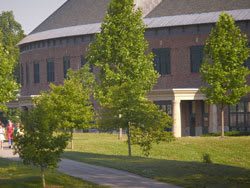
School begins at the Lexington School with nursery school and goes through the eighth grade, with almost 600 students who are geographically and ethnically diverse. The school has a special learning program for dyslexia and is accredited by the National Association of Independent Schools and the Independent Schools Association of the Central States. The student-to-teacher ratio is approximately seven-to-one.
Sports offered at LS include archery, ultimate Frisbee, lacrosse, soccer, tennis, cheering, and several other athletic pursuits. Students have eight extra-curricular classes from which to choose: Girls on the Run, chess, intramurals, Math Counts, Chinese, applied music lessons, speech and debate, and Scouts.
The curriculum is vertically aligned for each grade with Handwriting without Tears, science, integrated technology, English, the Open Court reading program, social studies, and Everyday Math. Competitive athletics are offered in cheer leading, archery, lacrosse, tennis, and several others. Intramurals are available in golf, yoga, drama, dance, lacrosse, hockey, cooking, and several academic offerings.
In first through third grades, students learn art, computer, PE, music, and Spanish in classrooms specially designed for these subjects. In academics, students advance at their own pace, developing their basic skills before transitioning to fourth and fifth grade where students undertake a more in-depth study of science. They study math with a math specialist. English and social studies are closely planned with other courses. All these efforts help students transition from elementary school to middle school.
Students in fourth and fifth grade are afforded lockers. They are encouraged to keep up with their own assignments and learn more independently. Fourth-grade students deliver snacks for each lower-grade classroom and fifth-graders lead the recycling program for the school.
The Lexington School uses the Mission Skills Assessment to measure the character traits of resilience, ethics, creativity, curiosity, time management, and teamwork, giving the school a way to measure how well students are assimilating these skills.
Students get to take hikes through a creek to help them understand the dynamics of that ecosystem. If students have difficulty with language, they are offered an alternative to the regular classroom at the Learning Center, where the student-teacher ratio is much lower. Multi-sensory approaches help students with difficulties in math. Science and social studies in the Learning Center are taught with projects that students can accomplish using their hands. Computer skills help students to become independent learners and their special interests are investigated through Talent Classes, which the students get to choose.
3 Forsyth Country Day School
(Winston-Salem, NC)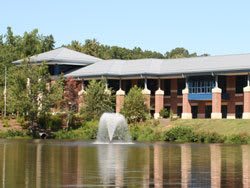
In January of 2014, Forsyth Family Magazine reported that 60 percent of students at Forsyth Country Day School in grades four through seven qualified for the Duke Talent Identification Program (TIP) because they ranked in the top five percent on the national Education Records Bureau tests. Students who started at FCDS during or prior to grade one were two times more likely to qualify for the TIP program than those who enrolled once they were older.
Duke University actively seeks academically gifted students in elementary school to help finance their education. Many parents become concerned about college admittance when their children are in high school. It would appear that early childhood education is just as important as high school education, and this is certainly the approach that Forsyth Country Day School takes. In 2014, it began a new curriculum entitled Our Path to Excellence and will follow that up with even more innovative programs in the next school year.
FCDS offers a year-round program for children aged two to four, called the Early Advantage Program, which will prepare students for the grades to come. During this time children are given knowledge that will act as a foundation for the future in math, writing, communication, literacy, and phonemic awareness. The preschool is part of the lower school. Kindergarten through fourth grade comprises the rest of the lower school where students study the core subjects, but also world languages, the arts, PE, science, and social studies.
Students in the lower school interact with students in the middle and upper schools so that they learn from other groups in a community atmosphere. Lower school students take several trips a year to places like the Carolina Raptor Center, the All-a-Flutter Butterfly Farm in High Point, the North Carolina Zoo, multiple museums, the Science Center in Greensboro, and other centers of educational interest. There are also several after-school enrichment programs such as ballet, tap dance, soccer, and ukulele class, to name but a few. Private music lessons are offered on several different types of instruments. In the spring, the Community School of the Arts puts on a play with the lower-school students.
Middle school is comprised of grades five through eight, where students are taught skills and offered a wider variety of learning opportunities, including community service projects and clubs and academic competitions.
4 Rocky Bayou Christian Academy
(Niceville, FL)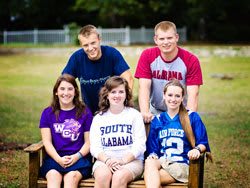
Rocky Bayou Christian Academy is a member of the Northwest Florida Christian Education Association and the Christian Schools International. RBCA is also accredited by the Florida Association of Christian Colleges and Schools, and the National Institute of Learning Development. RBCA begins with a preschool program and goes through twelfth grade. Over the last 10 years, 90 percent of RBCA graduates have been eligible for the Florida Bright Futures Scholarship, and graduates earn millions of dollars in scholarships each year.
The school has a Special Services Program for students from ages three to seven who have developmental delays, or who have needs in the area of basic academic skills, with interventions designed to help each student succeed. Kindergarten students learn to read and are taught phonics, short and long vowels, silent vowels, and diphthongs. They are taught to count money, tell time, and the basics of addition and subtraction, as well as counting to 100.
The Talent Development Program concentrates its efforts on students in grades one through six, giving individual attention to students. The Victors Class exists for the benefits of students with cognitive challenges to develop their academic and life skills. Therapy Services offers children with unique learning challenges assistance to help them navigate through school. Additionally, RBCA utilizes the National Institute for Learning Development Model, which includes a Search and Teach Program, Discovery Educational Therapy, Group Educational Therapy, Prescription for Reading, Speech and Language Therapy, and Testing Services. All of these programs offer interventions for students who have difficulties with processing information, academic skills, and language acquisition.
A second campus in Destin serves grades K through sixth grade with a high-achievement program with advanced technology in each classroom. The student-teacher ratio is approximately eight-to-one. Talent Development Class students who may have differences in the way they learn have the opportunity for advanced placement. Students are taught foreign languages, music, art, computer, and may even participate in the Ukulele Club.
The elementary curriculum includes Singapore Math and the Student Technology Program is run through a partnership with Boston University and the University of Richmond. Students take a standardized achievement test in the spring, the scores of which are used to monitor student learning success.
5 The Brearley School
(New York, NY)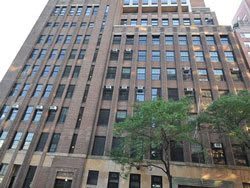
The Brearley School bears the distinction as one of the oldest schools in the country. The school was founded in 1884 and remains an all-girl college preparatory school, teaching approximately 700 students, kindergarten through twelfth grade. The lower school has approximately 250 students and encompasses kindergarten through fourth grade. The middle school has a little over 200 students and encompasses fifth through eighth grade.
The core values for the lower school are responsibility, respect, honesty, courage, and kindness. Students are encouraged to conduct themselves with dignity and to act with integrity so that they make a cohesive community of learners. Homeroom is the base of all learning, but as students become more responsible, they are given more privileges and responsibilities. There is an assembly every week where the girls sing, recite, and put on plays. There are also guest speakers on a wide range of topics from caring for rescued wildlife to the history of jazz.
By fourth grade students will be well trained in handling fractions, decimals, and percentages. They will be writing multi-paragraph papers and engaging in planning what they write. They will be reading short stories and novels and participating in speech, debate, skits, and plays. They will be learning about Judaism, Christianity, and Islam. In science they will be learning how machines work, including levers and gears as well as the anatomical structures of animals and the phases of the moon. Students will be continuing their knowledge of the Mandarin language and rotating through several art courses, including pottery and ceramics. They learn carpentry, music, and photography, as well as physical education and service learning. In other words, the students at Brearley have a robust curriculum.
The lower school seeks to develop character in all its students to be a foundation for their behavior in the middle and upper grades, and for life. Students are taught to respect the thoughts and work of others, while also giving back to the community through service projects. Students discuss peer conflicts in discussions that arise out of the academic activities in the lower school.
Lower-school students are offered gymnastics and soccer programs after school. After-school soccer does not begin for students until grade two, but gymnastics is open to all lower-school girls. Brearley also partners with the Chapin School to offer the LS Clubhouse after school for grades K through 6, where students engage in a variety of physical, intellectual, and artistic activities.
6 Forest Ridge Academy
(Schererville, IN)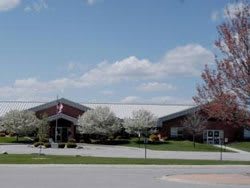
Children from junior kindergarten through eighth grade attend Forest Ridge Academy. Junior kindergarten uses several active learning experiences where they interact with classmates, people, events, and hands-on learning centers. Teachers post the day's schedule in writing and in symbols so that children will be encouraged to read. Children are given the opportunity to make choices about what they do and participate in problem-solving activities.
Children are encouraged to describe in words the things they are experiencing. They are taught the alphabet, sight words, and beginning reading skills through a phonics program. Math concepts are taught through use of manipulative objects and students are taught to recite and write their numbers, as well as count by fives and tens. They also attend classes in PE, music, art, Spanish, computer, sign language, wood working, and science. Science includes walks on nature trails, field trips, and age-appropriate experiments.
The kindergarten program has a complex reading, writing, spelling, math, social studies, and science program. Science uses experiments with magnets, light, and sound, as well as the different stages of butterflies and ladybugs. Students also attend the same special classes as the junior kindergarten students, including sign language and music.
Once students enter first grade, they are taught using Whole Brain Teaching. They learn about science through an interactive classroom garden and learn to read different types of media such as articles and poems. Students are taught tolerance for diversity, drawing, age-appropriate musical production, painting, and writing stories and essays up to five paragraphs long. Students get to take exciting field trips to the Art Institute of Chicago, as well as many other places.
Second-graders go the Chicago Field Museum and participate in a scavenger hunt. They also tour the Pawnee Earth Lodge and learn about the lives of the Pawnee Nation. Every other year, students return there for an overnight trip along with the third-graders and their parents. Third- and fourth-graders take an overnight trip to the Indiana Dunes to learn about nature and explore the several ecosystems found at the Dunes.
Fifth-graders travel to the Medieval Times Restaurant, take a trip to Camp Tecumseh, and go to the Field Museum in Chicago when they are studying Egypt, so that they can view the Egyptian exhibit. At the end of the year, they go to Space Camp where they experience many fun activities that simulate walking in near zero gravity and what it is like to fly in a spacecraft.
7 Journeys School of Teton Science Schools
(Jackson, WY)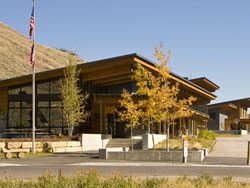
Journeys School offers education to pre-kindergarten through twelfth grade. Currently, Journeys is a day school, though boarding is being considered as an option for the future. There is also a long-standing home-stay program for international students.
Elementary students are immersed in a seven-course program that includes the usual academic courses, as well as Spanish and fine arts. The curriculum adheres to national standards known as Common Core. Students are assigned to math and language arts classes based upon the ability and social and emotional development of each student so that they can learn, receive help, and accelerate at their own pace.
Giving children a strong foundation in both reading and writing, the literacy curriculum uses multiple renowned and proven reading and writing programs. Students have reading and writing workshops daily and are instructed in skills that will make them strong readers and writers.
Math is taught with fewer topics being delivered in a more intense method using Math in Focus: The Singapore Approach. Science is taught using all scientific disciplines, including technology, to train students to think like scientists through an inquiry method so that students learn to ask questions and design their own experiments. Classes take place both indoors and outdoors.
Social studies classes emphasize citizenship and community. All classes are taught in such a way that students can make real world applications.
In addition to visual arts, elementary students also have music or drama classes twice a week. Elementary students give public musical and dramatic performances. Students study the type of sounds each instrument makes and the distinguishing characteristics of different types of music. The instruments played by elementary students are mostly confined to percussion instruments, the keyboard, and recorders.
Elementary students go on frequent day trips in and around the community and go on three extended day trips (of one to five days) per year to areas in Wyoming, Washington, and Idaho. Elementary students also participate in service projects designed for their age groups, such as building bird boxes and collecting wildflower seeds to plant in areas in need of beautification.
In the summer, a number of camps are available for lower-school students, such as the Jackson Hole Summer Science Camp, the Journeys School Summer Innovation Academy, and the Teton Valley Community School Summer Camps. At these camps, students can study the environment, discover how different animals make their homes, explore natural waterways, go on nature hikes, and camp out.
8 Cliff Valley School
(Atlanta, GA)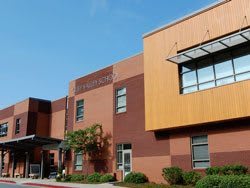
Cliff Valley School is accredited by the Southern Association of Colleges and Schools, and the Southern Association for Independent Schools. Cliff Valley is also a member of the Georgia Independent School Association and the National Association of Independent Schools. There are approximately 300 students and 57 full time teachers, the majority of whom hold graduate degrees. There is a very low turnover rate among the faculty, providing continuity within the school.
The campus is located on almost five acres in Northeast Atlanta and has 47,000 square feet of facilities, including a music room and performance stage, science lab, art studio, gym, outdoor classroom, a rooftop garden, outdoor play areas for recess and organized sports, and nature trails.
Spanish language acquisition begins at age three in Cliff Valley School. Preschoolers learn through exploration and visuals. Students work in a garden to plant and nurture what they grow.
The kindergarten through fifth grades are taught by teams who provide warm-up exercises in key subjects, activity centers, and instruction in language arts and math. Students go to recess and then lunch, after which they study science and social studies and go to enrichment classes in art, environmental science, PE, Spanish, technology, library, and music.
Various assessments are used to determine student skill acquisition and parents receive weekly progress reports and newsletters. Standardized tests are used in the upper grades to help determine how well students are acquiring knowledge and skills.
Students go on several field trips throughout the year and guest speakers come to the school from various professional fields so that students can make connections between what they are learning and the world around them.
Elementary and preschool students have reading buddies and lunch buddies so that older students can experience what it is like to mentor younger people and to act as role models.
Students in grades three through five may participate in club-style sports with no chance of being cut from the team. Sports include cross country, volleyball, basketball, flag football, and soccer.
An after-school program provides students with the opportunity to learn about and participate in drama, art, fencing, chess, golf, robotics, and music. After-school care is available for all students age three and above. Activities include games, free play, crafts, art projects and activities, and homework time. In the summer, camps are held for all age groups with age-appropriate activities that include computer programming, games, cooking, and sports. Before-care and after-care are offered in the summer where students participate in less structured activities with their own age groups such as free play, arts and crafts, and reading time.
9 Maret School
(Washington, DC)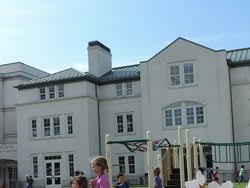
The Maret School, a college preparatory school founded in 1911, serves almost 650 students in kindergarten through twelfth grade on a seven-and-a-half acre campus. Originally, it was a French school that taught students from different nations, and with such a beginning, it most certainly respects and celebrates diversity. Students come from 41 countries and 42 percent are students of color. Students attend classes on a single campus with an average class size of 15, with a student-teacher ratio of seven-to-one. There are 106 teachers and 65 percent of them have master's degrees or higher. The school is accredited by the Association of Independent Maryland Schools.
Spanish instruction begins in kindergarten, while the study of French and Latin begins in grade six. By ninth grade, students are studying Chinese.
Every student is required to take classes in visual and the performing arts, and every student must take classes on twenty-first century essential skills.
Even though Maret is a college preparatory school, the elementary school does not try to teach at an accelerated pace nor teach more than students need for a good foundation before going into middle school. Children get to be children while going to science class twice a week, along with art and music. Students go to the library once a week and have PE four times a week. The number of times students go to Spanish class depends upon the student's grade level. Fourth-graders act as reading buddies to the kindergarten, and students from the high school plant gardens with the kindergarten classes. High school students help first-grade students raise fish (shad) and release them into a river. There are celebrations in which all students in every grade participate.
All students have access to laptops and there are also 3D printers, tablets, digital cameras, and more for students to use and learn from to prepare them for life in the twenty-first century. Service learning is also part of the curriculum.
An after-school program is in place for students in kindergarten through eighth grade. Students are given study help if needed, but it is a time for them to relax with activities such as a weekly movie, Puzzle Club, Girls on the Run, Culture Club, French Club, and Chess Club. During the year, the lower school has several celebrations, assemblies, and guest speakers.
Maret is accredited by the Association of Independent Maryland Schools and a member of eight professional educational associations.
10 Pacific Northern Academy
(Anchorage, AK)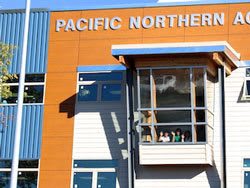
In August of 2013, Pacific Northern moved into a brand-new campus that includes a multiple-purpose gymnasium, a music room and large art studio, and a comprehensive science lab where students are challenged daily to develop independent and critical thinking skills. Students are afforded the opportunity to explore themes across the curriculum.
Though students do work collaboratively, they are held individually responsible for their learning in this college preparatory school. Nevertheless, teaching is differentiated so that all students can achieve to their own potential. Aiding students in this quest is a team of devoted teachers in small class. There are approximately 150 students in this pre-kindergarten through eighth grade school. The Responsive Classroom program is used so that students will become comfortable discussing their ideas and receive the support they need to continue stretching their thinking skills to newer heights.
Tuition is currently $16,995 a year, and tuition assistance is available.
PNA offers an after school program as well. The youngest students through third grade participate in both indoor and outdoor social and athletic activities. The fourth through eighth grade students attend Homework Club where they have an hour to quietly work on homework on the computer, then participate in both outdoor and indoor social and athletic activities.
Beginners and Early Kindergarten is considered Early Childhood, Kindergarten through fourth grade is considered the lower school and fifth through eighth is considered the middle school. All core subjects are taught by the classroom teacher and specialists teach the elective courses in PE, performing arts, Spanish, and studio arts. Students are encouraged to work through self-devised projects and consider with others the various ways the problems associated with the project can be solved. Students are then to compare and analyze their solutions.
All students are taken on field trips, some of which are overnight, and all of which are tied to the curriculum. Students have visited the Alaska Sea Life Center, Kachemak Bay, Denali National Park, the Alaska Native Heritage Center, the Performing Arts Center, and Campbell Creek Science Center, the Puget Sound, Washington, D.C., and Costa Rica.
Grades 2, 5, and 7 are required to participate in the Science Fair; participation is optional for all other grades. All students participate in a day of service (to the community), a fall concert,a spring musical, and a student art exhibit. Different programs are used for each subject, thus maximizing the students' learning.
Popular Online Bachelor's Programs
Learn about start dates, transferring credits, availability of financial aid, and more by contacting the universities below.
11 The Waterford School
(Sandy, UT)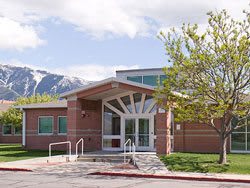
Serving children in grades preschool through twelfth, the Waterford School integrates academics, sports, fine arts, and social development into an interdisciplinary whole. In preschool and kindergarten students begin the process of learning to become readers, writers, listeners, and speakers. They are taught how to tell time and to use a calendar. They learn colors and numbers as well as graphs and shapes. Their learning is enriched with an introduction to dance, music, photography, theater, and art.
In the lower school, students begin an academic program that will teach students study habits and skills that they will use for the rest of their lives while they study elementary math, English, computers, science, history, dance, music, visual arts, PE, and library science. Students in the lower school also can be members of a math club in third and fourth grade, an inventor's club for second- and third-graders, a robotics program for fifth grade and lower-school students in grades three through five put on a play every year that is produced by the upper-school students. Fourth- and fifth-grade students compete in both a math bee and a geography bee. All lower-school students may join a Saturdays-only, eight-week Ski and Ride program.
Sixth-grade students are considered part of the middle school. It is in middle school that competitive sports begin. The curriculum is classical liberal arts/college preparatory.
From preschool on, students may join the Waterford Dance Academy where they learn ballet and modern dance. Preschool students start with creative dance and five- and six-year-olds start with pre-ballet. After that, there are five levels of ballet instruction for which students must qualify. There are open classes in jazz dance, modern dance, and contemporary dance.
Founded in 1981, the Sandy suburb school is located on a 40-acre campus with the majestic Wasatch Mountains towering behind it. There are 10 buildings with 250,000 square feet of instructional space. The lower-school building includes rooms for music, art, science, computer labs, math, gym, and library. Instruction in stringed instruments begins in the fourth grade, with brass and woodwinds added the next year. It is the school's mission to provide a liberal arts, college preparatory program coupled with the latest technology.
The school is accredited by the Northwest Accreditation Commission and the Northwest Association of Independent Schools. There are a total of 896 students with 403 students in the lower school and 210 in the middle school. The school calendar runs on a trimester system.
12 Sewickley Academy
(Sewickley, PA)
On a 16-acre campus just north of Pittsburgh, 700 students in pre-kindergarten through twelfth grade attend Sewickley Academy, at a campus with 60 classrooms, nine science labs, two robotic labs, five computer labs, a digital design lab, a media center, and two libraries. There is an outdoor classroom with a garden and two greenhouses. There are two auditoriums, both large and small, a visual and performing arts studio, an art gallery, and individual practice rooms for musicians.
The goal of the language arts program is to create critical readers and writers who can differentiate between credible and poor sources. By fifth grade students are reading with five major strategies while practicing their writing, editing, grammar, spelling, and vocabulary. Students read classic and nonfiction novels as a class, and on their own.
In social studies students learn about American history, as well as ancient cultures, American government, personal rights, and how people from different parts of the world came to live in the U.S.
The math program is college and life preparatory. By fifth grade students are learning to apply a set of rules or concepts to new problems. They are learning computational fluency and are given the opportunity to participate in the Math Counts Program. In sciences, students learn the scientific method of observing, taking notes, and analyzing their observations. By fifth grade students are studying life cycles, the universe, celestial bodies, the atmosphere, oceans, and other environments on the earth. Students in fifth grade have a teleconference with the Challenger Learning Center and visit the Sunship Study Station at the McKeever Environmental Center.
Spanish is offered in pre-kindergarten through twelfth grade. Students can begin taking French, Chinese, Latin, or Italian in sixth grade and an after-school Chinese program is offered for students in first through fifth grades.
All students take classes in engineering and robotics. By fifth grade, students are working collaboratively on sharing work fairly designing robots, and game design and programming. Students may choose to continue their pursuit of robotics in the after school program. Students also express themselves through classes taught in the Fine Arts Department: visual arts, dance, theater, and music. By fifth grade students are participating in a musical put on by the dance, music, and theater departments. All students have to participate.
The school has outside and indoor gardens so they can learn in an outdoor classroom so they can understand the interconnectedness of the environment and the importance of sustainability. Students prepare soil and organically grow their own plants which they then cultivate and harvest. There are many types of gardens, including a butterfly garden and a flower garden.
The lower school begins the week with a Monday morning assembly where birthdays are recognized, students sing, tell stories, and put on skits, and to which parents are invited. Each homeroom has to prepare an assembly at least once a year. In addition to field trips, guest speakers and artists are brought in to speak to students.
13 Cathedral School for Boys
(San Francisco, CA)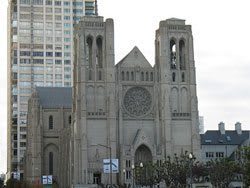
While tuition is substantial at CSB, it includes daily hot lunches and the outdoor education program, as well as books and computers. The school raises money to supplement the educational program which helps reduce tuition. Also, students at the school are allotted almost one and a half million dollars in tuition assistance. While volunteering is an essential part of the operation of the school, there is no quota for parents to fulfill.
Cathedral School for Boys is a kindergarten through eighth grade, all-boys Episcopal school. The school seeks boys who are highly motivated to learn, of a diverse cultural and ethnic background, and who are of good moral character. Students are scheduled for a tour of the school after all records have been received and a family interview is conducted at that time as part of the admissions process.
The lower school is made up of the kindergarten through fourth grade. Community service is a part of the educational program and students participate through a school-wide composting program and support of the Bayview Mission, an institution that provides services and food to people living in the Hunters Point and Bayview neighborhoods.
In the lower school, students learn some of their math through projects that give the students the opportunity to solve real-world problems in an analytical and creative way, while applying principles of mathematics. There are many learn-by-doing opportunities in other subjects, as well, with the students working independently or in small groups. Whenever possible, interdisciplinary lessons are provided. A community spirit is fostered through class meetings and community circles, as well as the human development curriculum and chapel services.
The school seeks to build strong character in all students so that they are socially fit as well as imbued with academic acuity and physical fitness. The boys are taught to be supportive team players in the athletic program and how to display good sportsmanship no matter the situation.
Once boys reach sixth grade, they are in the upper school (through eighth grade) where students are taught a humanities program integrating religious studies with English and history. Art instruction is founded in the belief that the arts help to develop the creative brain and celebrate the talents of each child. In addition to physical education, community service, drama, jazz band, math, outdoor education, science, and dances, students are taught Spanish and Mandarin languages and culture. Students in language classes take trips to China and Chile.
14 Santa Fe School for the Arts & Sciences
(Santa Fe, NM)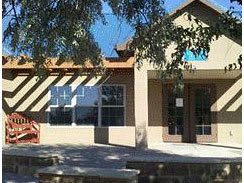
Approximately 130 students from preschool through eighth grade attend the Santa Fe School for the Arts and Sciences. Math and science are taught together with multicultural arts, all integrated into a curriculum that builds strong academic skills through expeditionary learning (EL). EL joins challenging academics with learning expeditions (real-world projects), community service, and character development.
Expeditionary Learning has multiple benefits, including creating a culture of respect, creating deep thinkers, giving support to all learning methods, and creating curious and knowledgeable students and teachers.
For middle school students who have been home-schooled, a bridge program is offered which allows middle school students to participate in selective classes at school while continuing home schooling in other subjects.
An interdisciplinary approach is used so that students see the relevance of all subjects and how they are interrelated. Technology is integrated into all subjects, as well as learning appropriate communication skills. The school has built connections with local international organizations so that students can establish relationships with international schools and students.
Elementary grades are separated into three groups: Stargazers (grades one and two), Centaurs (grades three and four), and Badgers (grades five and six). Each group has a project each year which culminates in a book highlighting what they have learned about the subject. The Badgers, for example, raised trout from eggs. Each student became an expert on a type of fish and several drawings of fish were exhibited in their book. They also studied the aboriginal peoples of Australia and produced a book of their original artwork along with poetry. Work for each group is available for viewing in the Center for Student Work.
In the summer, the school offers a variety of camps for all ages that explore topics from mummies to cooking around the world, and from international folk art to wilderness survival.
15 Waimea Country School
(Kamuela, HI)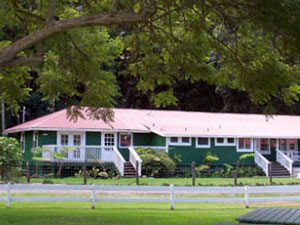
Founded in 1996, the Waimea Country School serves children from age four to twelve, developing them into confident and creative thinkers who seek creative, ethical solutions. Students are grouped into multi-age learning groups so they can excel or receive remediation as needed, leaving them accomplished in all subjects while supporting them in the learning style where they feel most comfortable. The focus of each class is on the process of learning with multiple curriculum resources for various learning styles. The average class size is 16 students. Some sixth graders qualify to work in independent study courses.
The school, located on the "Big Island" of Hawaii, is surrounded by diverse, remarkable resources such as the Waimea Nature Park, the Kahilu Theater, the W.M. Keck Observatory, and the Canada-France-Hawaii Telescope, to name a few. The school is behind the St. James Episcopal Church and across from the Waimea Community Park.
In addition to the core academic courses, students are given character education so that they are not just encouraged to grow intellectually, but morally and spiritually, as well. Their moral development is as important as their intellectual development, so that the school hopes to eliminate bad manners, inappropriate words and phrases, teasing, bullying, and gossiping, so that students can grow to be adults capable of making ethical decisions.
The school has a garden and students spend time in the garden each day with gardening projects integrated into the curriculum. This blends well with the Hawaiian Studies Program, which seeks to give students an appreciation of the islands, their culture, and the challenges faced by the state of Hawaii today. Hawaiian Studies also blend well with the Character Education Program, as values are viewed through a Hawaiian perspective.
Students are also taught health and wellness, art, and music. Students learn some of the Hawaiian language with a value taught each month and translated into Hawaiian, such as compassion (lokomaika'i) and respect (hō'ihi).
16 Rabbi Pesach Raymon Yeshiva
(Edison, NJ)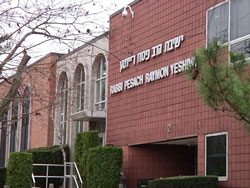
In preschool, RPRY seeks to spark the imagination, creativity, and curiosity of children through motivation programs that promote caring, responsibility, and self-reliance. The lower school goes through the fourth grade and utilizes hands-on activities and blended-learning opportunities, while teaching to the distinctive style of each student. Students learn interactively and work in small groups. Individualized instruction allows students to progress as they constantly participate in projects, quizzes, tests, presentations, and individual inquiry while working toward targeted objectives.
Academic courses are taught in an interdisciplinary manner so that students see the relevance of what they are learning. Reading and writing, for example, cross all subject areas. Students read stories and books and participate in STEM-focused objectives. Students write on subjects that are relevant to them. They learn about health through a class and through physical education.
Middle school begins in grade five and goes through grade eight. In the middle school students become more active within their communities, initiating community projects to raise funds for people in need. Class sizes are kept small and the motto of the school is: “Challenging the Mind and Nurturing the Soul.”
Because students learn differently, each student's learning is individualized and aligned with the state's common core objectives in a small group setting. Students with learning difficulties are not pushed to achieve beyond their abilities, but accelerated learning programs are available for advanced students so that they are not held back by others. Students can take support classes, as well as self-contained enrichment opportunities.
Students have access to elective classes through distance learning, a new digital social studies program, weekly STEM classes, science, computer, and state-of-the-art science labs.
17 Green Hedges School
(Vienna, VA)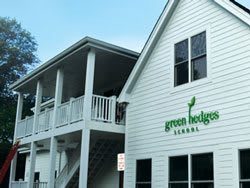
Preschool students at Green Hedges are taught with a Montessori program. The elementary school teaches students in traditional classrooms for grades one through eight. GHS is a member of the American Montessori Society, the National Association of Independent Schools, and the Virginia Association of Independent Schools.
Founded in 1942, GHS has approximately 190 students and 23 teachers, 57 percent of whom have advanced degrees. It began in the home of the founder and had 10 students and one teacher. By 1955, the school had blossomed to 60 students, so four acres were purchased in Vienna, after which it expanded to include all levels through grade eight.
GHS is committed to its students' achieving distinction with character while exploring opportunities. Students begin learning French in preschool and Spanish in fifth grade. Throughout elementary school, students study music and art, as well as physical education. In the upper grades, they are taught to play the recorder and learn music theory. Students may also participate in band starting in the fifth grade. All grades go on age-appropriate field trips, and starting in fourth grade, they go on overnight trips.
Students begin learning technology skills in first grade by learning terminology, digital drawing, iPad navigation, and keyboarding skills. Keyboarding skills are taught every year in the elementary grades.
Beginning in grade five, students start participating in the science fair and start learning pre-algebra. Art is integrated into the curriculum, not just for the sake of art itself, but to show students how art is connected to history, science, and language arts. By the time students are in fifth grade, they are sculpting, painting, and using clay and multimedia to create art projects. Also by fifth grade, students are learning research skills (including how to cite references) and creating their own media presentations.
The school produces a monthly magazine called Clippings where school philosophy, teachers, parents, and students are presented in various articles and interviews. The school sponsors multiple events throughout the year that bring families together, such as Founders' Day, Grandparents' Day, DragonFest (an afternoon of play, competitions, food, face painting and more), a spring concert, a first grade play, and a spring dance, to name just a few. At GHS, it is not just about education, but about Community where students, parents, community members, relatives, and alumni can join students and teachers in celebration of what they are accomplishing.
18 The Roeper School
(Bloomfield, MI)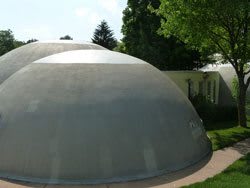
It may seem to some a trite and clichéd goal, but one only has to turn on the news on TV or pick up a newspaper to see that the simple lesson of learning to be nice to one another is an essential ingredient to the social contract that binds communities together. Roeper is a pre-kindergarten through fifth grade school with approximately 250 students and in the lower school children learn to work together, to be kind to one another, and show respect to others. It is hoped that children will develop the desire to make a difference in the world through community involvement, personal and social awareness, and respect for diversity.
Roeper seeks gifted students who are being prepared for post-secondary education. Students must take a gifted IQ test and many things are taken into consideration when a child is applying for a place at Roeper, including strong academic performance in previous grades and teacher recommendations.
Students in the lower school are introduced to art as early as age three and are given access to different media in which they produce their own art. They are exposed to different kinds of art and encouraged to handle different things to get a feel for different textures. In Stage 2 of the art program, students are exposed to visual literacy using a variety of tools and materials while developing the individual student's skills. In Stage 3 Art, students are taught respect of the work of other artists as they explore different themes and more techniques. Finally, in Stage 4, students are given a wider array of artistic experiences while also exposing students to art history and multiculturalism.
There is also a four-stage performing arts program in the lower school and seeks to expose children to different types of music, both oral and instrumental. By stage 3 they are playing the soprano recorder and by stage 4 they are able to choose an instrument and play in the band or sing in a large choir. There is a beginning and advanced band class for elementary students.
Each elementary student begins the day in homeroom where English, math, and social studies are covered. Students then take additional classes in French, science, PE, dance and movement, art, music, and library and computer skills.
19 The Cambridge School
(Chicago, IL)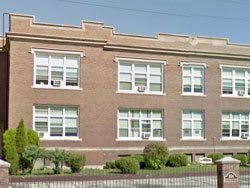
At the Cambridge School, students are given an individual learning plan based upon their strengths and weaknesses, socially, academically, and spiritually. Students are taught in a way that shows how all courses are interrelated, so that students will develop critical thinking and long-term memory in humanities, mathematics, and the sciences in a classical education.
The humanities includes literature, writing, reading, poetry, history, geography, drawing and painting, drama, and music. Every aspect of the curriculum teaches students to think critically and that the spiritual life should not be treated separately but as an integrated part of life. The science curriculum is based on a hands-on approach where students can take time to appreciate nature.
Spanish is taught to students from kindergarten through the fourth grade. Latin and Greek are taught to students in grade three through eight. All students are taught the importance of physical fitness and good sportsmanship through a physical education program.
While Cambridge is a faith-based school, students are not required to believe or adhere to a particular creed. Rather, they are taught a Christian worldview through the curriculum and by teachers who profess and practice Christianity.
Students take standardized tests to evaluate learning and students consistently score 90 percent or better in reading and math.
Primary school covers pre-kindergarten through kindergarten where students learn the building blocks or foundation on which they will increase their academic knowledge. Grammar school is first through sixth grade and students begin studying ancient civilizations and advance to the rise of capitalism and industrialization in the fifth and sixth grade. Reasoning, writing, and reading become the main focus of skills to acquire in grammar school.
Founded in 2005, the school has about 160 students. Tuition assistance is available.
20 Arbor School of Arts and Sciences
(Tualatin, OR)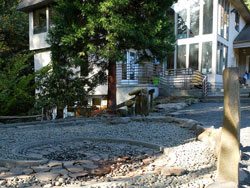
The Arbor School is situated on 21 acres and serves kindergarten through eighth-grade students in a thematic curriculum taught in an interdisciplinary way and where mixed age grouping is used. Students stay with the same teacher for two years, and because of the multi-age grouping, form bonds with older and younger students. It is the goal of ASAS to help students obtain the skills necessary to learn important ideas through inquiry and self-expression to give their learning meaning.
Learners are separated into groups. Primary is comprised of kindergarten and first grade. Juniors are second and third grades. Intermediates are fourth and fifth grade and seniors are sixth through eighth grade.
Primaries learn about cycles (plants, small animals, water), Greek mythology, migrating animals, and maps. In mathematics, they learn numbers and operations, geometry, and measurement, while in literacy they earn the process of reading and writing.
Juniors learn about geology, electricity, magnetism, clouds, the water cycle, the colonization of the Americas, Native Americans, and westward expansion. In math they continue the learning they started as primaries. Juniors are reading and writing fluently and begin learning about plot and character development.
Sixth grade students learn about plate tectonics, paleontology, and genetics, and start an algebra curriculum written by two teachers at the school and published by the Arbor Center for Teaching, so that by the time they finish eighth grade, they will have been educated to the level of a high school Algebra I class.
All students are afforded the opportunity to design two- and three-dimensional art projects that augment the theme being taught at the time. Students use a variety of media to create their art projects, some of which are featured on the school's website.
Music includes movement, instruments and music. Intermediate students begin playing the soprano recorder and reading music. Senior students learn music that features themes they are studying, such as cowboy ballads when they are studying westward expansion. Students learn to arrange and perform orchestral compositions they have written, which are used in school productions and/or concerts.
Finally, students of all ages create and produce independent projects, both individually and as a class. Students learn to capture the attention of an audience with their words and with visual aids of their own making.
21 Highlands School
(Birmingham, AL)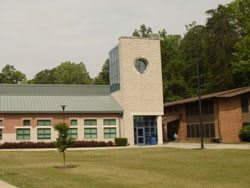
Founded in 1958, Highlands School educates approximately 280 children in pre-kindergarten through eighth grade with 31 teachers. The students are provided a STEM curriculum and the school has two modern STEM laboratories. Lower-elementary students study STEM concepts in a collaborative unit using Everyday STEM, STEM in the Gym, and Lego Education components. Elementary students will be using a STEM lab that is in the process of being built in the Learning Center building so that students can work with hands-on experiments in teams. Middle school students will also be using a new lab that will give students the opportunity to explore the physical sciences and life on earth with computer-directed, hands-on learning.
The school is divided into three sections: the Primary School (all grades through third grade), the Elementary School (grades four and five), and the Middle School (grades six though eight). In primary school, classes are self-contained with a priority on early literacy and a strong foundation in math concepts and skills.
In elementary school, students choose whether to study French, Spanish, or Chinese. Students work in the core classes as well as the fine arts, performing tasks as group members and as individuals.
In upper school, students continue the challenging approach to the core courses and are given opportunities to participate in leadership roles in the school such as academic competitions, robotics, public speaking, yearbook, greenhouse science, art, music, drama, and technology, as well as continuing their language studies (which they chose while in elementary school).
Standardized testing is used to determine learning success. A full-time learning specialist is employed to help students develop test-taking strategies, study skills, and planning and organizing.
An extended day program provides daycare and enrichment before and after school. Students may learn to play tennis, piano, or guitar, or they could choose to learn chess or karate.
The athletic program helps children to develop good sportsmanship through fall and spring soccer, cross country, and basketball. A professional and certified North American Soccer Camp coach from England leads each team in a practice once a week. At other times, parents act as coaches.
22 The Bush School
(Seattle, WA)
Learning is not confined to a formal classroom at the Bush School, where students might find themselves in an outdoor classroom or in an urban setting, a place in the wilderness or in another country. Lower-school students often go on field trips and fifth-grade students go on a retreat.
The curriculum for the lower-school students focuses on different cultures and real-world situations. Students learn to solve problems and think critically through projects completed with other students, class discussions, and cooperative learning groups. Each student's abilities are appreciated and respected so that students are not pushed to learn beyond their capacity. It is the goal of the lower school to make each student an active participant in his own education. Students are taught in such a way that they develop the ability to think of solutions creatively and analytically, coming to conclusions that are made in an ethical framework. With approximately 600 students, there are 85 teachers, some of whom are part-time, and 45 support and administrative staff in 10 buildings on a six-acre campus. Bush has two gyms, seven teaching studios, an art building, a theater, a fitness center, a community room, a library, and four computer labs. There are multiple places for students to play, as well as a practice field for organized sports.
The Bush School is accredited by the State of Washington and the Northwest Accreditation Commission and is a member of the Northwest Association of Independent Schools and the National Association of Independent Schools.
The school provides a variety of counseling services to assist children in their cognitive, social, and emotional development through several strategies and programs. The lower-school counselor serves children from kindergarten to fifth grade and offers group, family, and individual counseling when needed.
An extended day program is offered for the lower school with K through second grade in one group and third through fifth grade in another (however, there are opportunities for the groups to interact). Students have free play time, organized games, homework help, games, sports, and science to enjoy and from which to receive enrichment.
Lower-school students go on local field trips and grade-level retreat programs begin with fifth grade. Support services are offered to both students and parents for social, emotional, and academic support. It is the goal of the Bush School that all students develop confidence and self esteem. Students learn about different cultures, and as they do, they grow in intellectual skills of problem solving and critical thought.
23 St. Paul Academy and Summit School
(St. Paul, MN)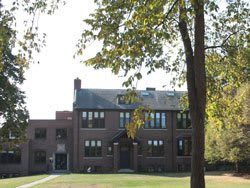
The Accountable Classroom allows teachers to strengthen the talents of students in a small class size, while teaching students to respect the opinions and thoughts of others. Students are expected to be engaged and contribute in the classroom. In the lower school, classes are made up of flexible groups with two lead teachers in every homeroom. The day of the lower-school students begins in homeroom and they are in and out of homeroom all day as they go to other specialty classes in science, art, library, music, PE, and Spanish. Specialty teachers work with homeroom teachers to modify and differentiate instruction to make the learning experience an individual experience.
Because technology plays such a large part in the culture, it is a vital integrated part of the curriculum. Elementary students use an array of technological devices including iPads, SMART boards, and Classmate PC Convertible tablets. There are devices in the homerooms and specialist classes teach students computer skills in a lab. Starting in fifth grade, all students receive a lapto, which is used throughout the day.
In the summer there are classes that students may take in academic courses, as well as special interest classes. In the fall of 2015, SPA will be opening the Huss Center for the Performing Arts for musical and theatrical performances.
Kindergarten through second grade students have an active academic program in language arts, math, and social studies. Students develop their language acquisition and mastery through phonics, reading, writing, spelling, and vocabulary, among other English subjects. In social studies, students are encouraged to learn about their families and friends, but also to learn about the culture of the city around them. They are introduced to maps. In math they are focused on skills and concepts as well as the processes of computation. In grades three and four students build on the language arts skills acquired in earlier grades and learn the difference between fiction, nonfiction, and literature. Students are taught writing and proofreading. The math and social studies programs are interdisciplinary programs developed by McGraw-Hill.
Fifth-graders have an enhanced role in the school. They lead the all-school assemblies that take place twice a week. They also plan and implement the Thanksgiving food drive and the all-school bazaar. In addition, they run the recycling, school tours, and lost and found programs. They assist students in lower classes and assist teachers in the classroom and the library.
24 Foothills School of Arts and Science
(Boise, ID)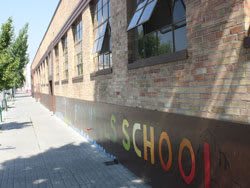
Serving preschool students through ninth grade, Foothills School of Arts and Sciences is fully accredited by the Northwest Association of Independent Schools and has approximately 150 students. In 1994 the school moved to its current location in downtown Boise, where it has access to the museums in the nearby art district, parks and rivers, cultural and art organizations, and Boise State University.
Foothills School adheres to national curricula; however, inquiry-based learning is used. Students learn by asking questions, gathering facts, and investigating. Students are taught to consider all possibilities and come to fact-based conclusions. Students learn to think, conduct research, and solve problems and thus become critical thinkers. All instruction is differentiated to tailor teaching to each student's individual needs and learning styles.
The early learning program focuses on the strengths of each child. Students learn to express themselves in the language of music, math, art, performance, discussion, science, drawing, and many other ways so that they are not limited in how they learn.
In the lower school, there are two grades in every class. These dyads are flexible, however, and the grouping of students changes throughout the day depending on what is being learned and the needs of the students. Equal weight is accorded to academic, personal, and social responsibility. The core courses of knowledge are emphasized in the lower school, particularly math and reading to ensure success throughout the student's time in school. Reading is used in every aspect of the curriculum and the math program, Investigations, is a nationally recognized program. Math class for all age groups takes place at the same time each day so students may attend the class that best suits their needs irrespective of age or grade placement.
Physical education is a key component in the lower school, as well as music class where rhythm and movement are taught.
Fifth- and sixth-graders take a foreign language, performing arts, and visual arts. They also take part in Socratic Seminars and other discussions in which students learn how to express their opinions in a respectful manner and to discuss how they came to their conclusions.
Students participate in service learning through projects that last as little as a week to as long as six weeks, in which they meet curriculum goals. Students are instructed in the use of technology so that they will become lifelong learners in technology, also.
25 Breakwater School
(Portland, ME)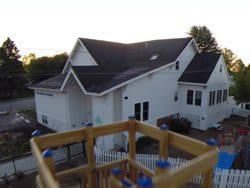
Breakwater School educates children in pre-kindergarten through eighth grade and has an enrollment of about 140 students. The school provides a balance between both intellectual and social pursuits, instilling skills needed to be successful in academics. Students learn collaboratively in multi-grade levels on interdisciplinary teams. The school, which was founded in 1956, owns a 21-acre nature preserve in the town of Cumberland, approximately 10 miles north of the school's primary campus. The student-to-teacher ratio varies by grade, but is never larger than 10-to-one.
A before-school program is available for all grade levels, but for Breakwater students only. The after-school program lasts until 5:30 and is open to all grade levels through eighth grade for students from Breakwater, as well as other schools. An after-school enrichment program provides a diverse selection of interesting activities and changes at the end of every grading period. Activities have included rock climbing, Lego robotics, ceramics, and many other exciting programs. The school also provides education classes and enrichment activities for parents.
The school is accredited by the New England Association of Schools and Colleges and is licensed by the State of Maine. Students are provided lessons that connect the subjects they learn to the real world. In addition to academic classes provided by the classroom teacher, students also have classes in performing arts, science, world languages, art, and music. Lessons are taught through interdisciplinary units created collaboratively by the classroom teachers and the elective teachers, giving students multiple opportunities to engage in hands-on project learning.
First- through fourth-grade students attend science twice a week for 50 minutes and by third grade are learning in the outside environments at a river sanctuary, a pond, and the school's gardens. Students in first through fourth grade attend Spanish twice a week for 45 minutes, and by third and fourth grade the class is taught mostly in Spanish. In fifth grade, the rigor of these classes intensifies as the students become more knowledgeable and confident in the subjects.
26 Willowwind School
(Iowa City, IA)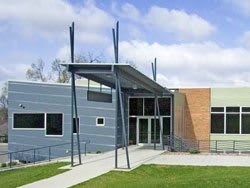
At Willowwind, students have one teacher who stays with them through most of their school years and children learn in multi-age, multi-grade groups so that students will develop a social conscience, self-discipline, and academic skills, and learn to problem-solve creatively in a climate of high self-esteem and mutual respect. Students are encouraged positively so that they are not afraid to fail or make mistakes and have the courage to move past their mistakes and learn from them. The preschool is based on the Montessori method, but the other grades are not. Still, they have small numbers so that teachers can use differentiated instruction to tailor the learning to each student's learning style. Teachers use Singapore math and learning is rigorous in all academic areas. Students learn Spanish, and lessons for all subjects cross the curriculum, giving students the opportunity to learn experientially in hands-on assignments and projects.
The school is accredited by the Independent School Association of the Central States and by the State of Iowa. Teachers present a humanities-based curriculum and teach students how to develop appropriately, both socially and emotionally, through Character Education lessons.
Students at Willowwind come from both urban and rural areas, are economically, ethnically, and socially diverse, and have earned state recognition in writing, math, chess, inventions, spelling, history, and science. Art galleries in the area display art by Willowwind students and students have performed puppet shows in both French and English. They put on plays, give concerts, and have performed in university operas. Students who graduate from Willowwind go on to be academically, socially, and artistically successful. Alumni include engineers, business people, writers, and musicians.
Students are given lessons in Spanish, while music delivered by specialists. Students are taught to be socially and community conscious and to exercise mutual respect for one another. It is the goal of WS to prepare students, academically, socially, and emotionally, to leave the school after sixth grade and be successful whether they go to a public or private school. An after-school enrichment program is open to all WS students in six-week sessions. A summer program offers a cornucopia of courses that cover a wide variety of fun subjects and is open to all children, not just WS students.
27 The Miami Valley School
(Dayton, OH)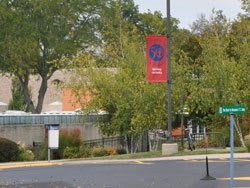
At the Miami Valley School, students may start in pre-kindergarten and continue through their senior year in high school. A big part of the education at MVS is character education, which teaches personal responsibility, mutual respect, teamwork, and empathy for others. There are almost 500 students and a little over 60 teachers. The school spans 22 acres and has various clubs in which students can participate.
Every Monday there is a school-wide assembly and there are frequently notable guest speakers. Parents receive an electronic newsletter every other Friday and are invited to stop by for a visit or to pose a question.
The early childhood group is comprises three- through five-year-olds. Lower school comprises kindergarten through fifth grade, while middle school encompasses grades six through eight.
Students in the lower school learn both the Spanish and Mandarin languages and are given an overview of Spanish and Chinese cultures, geography, holidays, music, and art. Students are taught both speaking and listening skills.
In lower school students begin studying science by studying ecosystems, part of which is done in the Outdoor Exploration Center where students begin to appreciate the natural world. By fifth grade, students are considering how they can positively impact the world while learning important scientific concepts.
Students in the lower school are exposed to a variety of methods in both visual and performing arts. Once in fifth grade, students can be in band, choir, or a string ensemble. Students begin painting, drawing, and creating works with clay and ceramics. These skills are intensified and honed throughout lower school. All lower-school students participate in age-appropriate physical education.
Reading beings early at MVS and a reading specialist works with students in the lower grades in conjunction with the classroom teacher so that students begin building a strong reading foundation from the beginning of their educational careers. Students begin learning early to communicate in writing. By fifth grade, students are using their reading, writing, and speaking skills in social studies and become big brothers and sisters to kindergarten students. They meet several times a month to play games, visit, or participate in organized activities.
Singapore math is taught at the school and students also have their math instruction supplemented by a math magazine called Dynamath. Even social studies is covered in math, as students contemplate problems faced by the Founding Fathers and use their critical-thinking skills to evaluate these problems and potential solutions.
After school, lower school students can have an extended day of with recreation both indoors and out. They also have snacks, play games, finish homework, or seek help with their school work.
28 St. Edmund's Academy
(Pittsburgh, PA)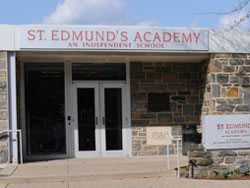
Although St. Edmund's Academy initially started as an Episcopal school for boys in 1947, it has become a coeducational school for people of all belief systems who are united by the school's core values and standards. The six core values are service, responsibility, understanding, respect, honesty, and high standards. These core values are integrated into all lessons throughout each grade which begins with preschool and goes through eighth grade. There are almost 300 students and 40 faculty members. It is no accident that students through eighth grade attend St. Edmund's. The school is designed in this way because research has shown that eighth-graders who went to an elementary school which comprised first through eighth grade did better on standardized tests, made better grades in ninth grade, and were less likely to give in to peer pressure in high school.
The lower school is made up of grades one through four. They are taught skills which will allow them to be successful in individual and collaborative activities. They receive instruction in computers and keyboarding, science, world cultures, library, art, social health, and physical education, in addition to their core courses taught by their classroom teachers. Lower-school students have unique projects, field trips, and experiences crafted by their teachers to maximize their opportunities to learn and display what they have learned.
The upper school comprises grades five through eight and students in the upper school move onto newer and more challenging opportunities such as producing the school newspaper, participation in group competitive sports, choir, science projects, and essay writing contests, to name a few. Fifth-grade students have the opportunity to learn writing, Spanish or French, and band or orchestra, as well as a science curriculum that includes robotics, ecology, physics, and chemistry. Sixth through eighth grade have similar electives, but also add biology, geology, oceanography, meteorology, and astronomy to the subjects covered in fifth grade science. In seventh grade, students stop taking writing and start taking Latin. Each grade in the upper school teaches a progressive math program with starts with pre-algebra in sixth grade and culminates in algebra or geometry in eighth grade.
Despite the school's departure from its religious origins, students and staff still meet on Thursday mornings for chapel where guest speakers talk to students about the core values, community service, and developing acceptance of the differences of others.
29 Ridgewood Preparatory School
(Metairie, LA)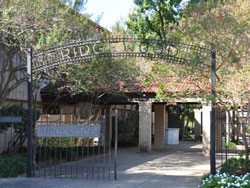
Located on four acres in the New Orleans area, Ridgewood is a college preparatory school for pre-K through twelfth grade that educates students from several states and countries. The school was first founded in 1948. All grades take library education so they can learn the skills needed to adequately research topics. Students are given the choice of participating in several fine arts programs, including band and speech. Additionally, students in first through twelfth grade may take private lessons on piano, violin, and guitar during school hours.
The school uses achievement tests to determine how well students are learning at every grade level. It is the goal of the school to prepare every child for higher education. There are over 300 students in the school and 31 teachers with a student-teacher ratio of 11-to-one. The school is accredited by the Southern Association of Colleges and Schools and is approved by the Louisiana State Department of Education. The tuition for elementary grades is $5,400, well below the cost of most private schools. A computer lab has 25 IBM desktop computers. The library offers computers for student use, as well as instruction in research, a computerized card catalog, full text articles from magazines, and several CD programs. The primary school has Internet access throughout the school.
RPS strives to provide a complete education so that students have knowledge and an appreciation of every aspect of life, including philosophical, religious, social, aesthetic, and intellectual. It is a small school, but that does not hurt its offerings to the students. Students can participate in music, Library Club, Student Council, and Peer Helpers. There is also a before- and after-school program.
The majority of faculty members have advanced degrees. They provide tutoring before and after school. Still, students are encouraged from an early age to take responsibility for their learning. Lower-school teachers try to instill good work/study habits, as well as skills that the students will need throughout their school years. Unlike in many public schools, handwriting is taught. Math is accelerated by one year in pre-kindergarten and spelling and grammar are accelerated a year in the first grade.
Students go on curriculum-related field trips. They are required to take instrumental music for one session during the fourth grade. Once they enter the fifth grade, they are considered in middle school and they then add computer science and speech to the courses they are required to take. Middle school students may participate in athletics, band, and the Library and Science Clubs.
30 Sussex School
(Missoula, MT)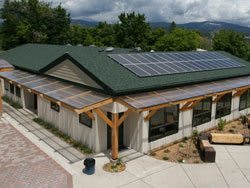
Since opening in January of 1971 as a preschool, the Sussex School has continued to expand and grow to its present size of 120 students for grades preschool to eight. Every early-age student is assigned an older student who acts as a guide and mentor, thus creating formal and informal interactions in multi-age groups. These groups are made up of what is known as Bigs and Littles.
At the beginning of each year, the Sussex School family spends three days and two nights at Flathead Lake. There are multiple outdoor activities and chores for parents, teachers, students, and administrators that help to build bonds between all groups. In October, the school has Grandparent and Special Friend Day so that friends and relatives can come and observe the school in action.
Every two years the students put on a play or musical. The afternoon closest to Halloween, students and teachers dress in costumes. Bigs and Littles carve pumpkins together and everyone may visit a haunted house prepared by the eighth-graders. The last afternoon before the December vacation, students perform songs from music class and show their artwork to the community. Each class then shares with the audience their Wish for the World.
In January all students participate in a snow program, traveling one afternoon a week to ski or snowboard for five to six weeks. In the spring each age group goes on field trips to places like Yellowstone National Park, where students receive guidance from their history and science teachers. Students pay for this trip by raising money cleaning areas of Missoula and performing community service projects. Sixth- through eighth-grade students participate in a math competition called Math Counts. The top four students who win at state go on to represent Montana in a National Championship. There have been several Sussex students on the National team.
Academically, children are taught with a progressive emphasis with constructivist learning taught through essential questions and understanding. The curriculum is project-based and designed to teach students to develop the skills needed to succeed academically in high school and college. The curriculum is also designed to help students to grow emotionally so they can develop compassion and empathy.
31 Rossman School
(St. Louis, MO)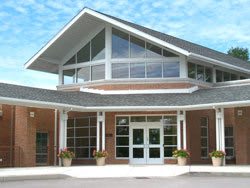
Children from age four (pre-kindergarten) through sixth grade attend the Rossman School where there are 28 teachers and approximately 225 students. Each class has two full-time teachers and students receive a strong academic foundation in language arts, math, social studies, and science, as well as character instruction in the attributes of honesty, responsibility, respect, and kindness. In addition to the core classes, children have lessons in music, Spanish and Latin, library skills, art, and PE, on a 20-acre campus with a building that has 45,000 square feet. There are also two playgrounds, an athletic field, and nature trails through a wooded area.
The school has cutting-edge technology, including MacBook Air laptops, smart boards, and iPads, with a full-time technology coordinator who works with the teachers to help them integrate technology into their lessons.
Every Monday morning all students and teachers gather for a beginning-of-the-week assembly. Students have a field day during the school year, a Halloween parade, a Grandparents' Day so family members can observe the children in school, a musical performance before the holidays, and a Spirit Day basketball game.
To assure that students are learning as they should, the school administers the Educational Records Bureau Comprehensive Testing Program. Students at Rossman outperform students in the state in both public and private schools. Students from Rossman participate in the Missouri Math League Competition, the National Geography Challenge, and the Creve Coeur Arbor Day Art Contest in which two Rossman students won first place in 2015 in two different categories.
Tuition includes the lunch meal, but there is an additional fee for books and supplies, the extended day program, PE uniforms, and camps, and an additional request for an $1800 per student donation every year. The fifth grade has an overnight retreat and the sixth grade class has a week-long camp in the fall. The sixth grade also goes to Space Camp and the Shiloh Civil War Battlefield for four days in the second semester.
After school students can receive enrichment in subjects such as cooking, robotics, filmmaking, art, foreign languages, sewing, dance, and theater. After-school sports offered include cross country, volleyball, floor hockey, soccer, softball, gymnastics, basketball, and flag football.
Students can also participate in the student council. Student council members help plan community service projects, greet visitors, run the fund-raising campaigns, and lead the Monday Morning Gatherings. The school also has a Cub Scout troop and a Girl Scout troop led by parents for students who wish to participate.
32 Gulf Stream School
(Gulf Stream, FL)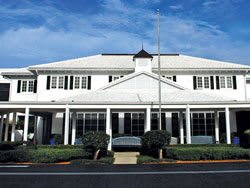
When Gulf Stream School began in 1938, it had 30 students. Since that time, it has been accredited by the Florida Kindergarten Council and the Florida Council of Independent Schools. There are now 250 students with class sizes varying from six to 18 on a five-acre campus on the ocean.
There are three levels at Gulf Stream. The first is a pre-kindergarten program for three- and four-year-olds, with two teachers per classroom and a teacher and assistant in each of the two kindergarten classes. The preschool day ends at 11:30.
The second level is the lower school, which consists of grades one through four, with two classes for each grade. Students in grades two through four stay with one teacher for reading, writing, math, and social studies. They then change classes for science, Spanish, art, music, drama, PE, library, and computer. Fourth-graders leave at 2:20 and fifth and sixth grade leave at 3:15 or may remain at school for study hall.
The final level is the upper school, which is for the rest of the students through 8th grade. There are two teachers per grade and students change classes following their individual schedule. While the academic day ends shortly after 2:00, students have one after-school hour of sport and one after-school hour of study hall. Their day thus ends at 4:15.
There is an after-school program available for younger students, which goes through 4:15 at the end of the upper-school day.
The curriculum emphasizes basic skills in English, math, science, and social studies, but also in language, music, art, computer, and PE, with the goal to achieve placement in a secondary school that is best for the student to prepare them for college. Each class commits to one or more community service projects and students are encouraged to volunteer their time after school to acceptable organizations. Students are given multiple opportunities for public speaking to help them develop confidence and display poise when addressing a group. Students leave Gulf Stream as confident and accomplished writers.
Students receive lessons on character from the school counselor and those lessons are also interwoven into every other lesson taught at the school. Additionally, students have the opportunity to experience learning in person through trips to the Grand Canyon, the Everglades, the Kennedy Space Center, and many other locations. All fifth- and sixth-grade students take Latin, and Spanish instruction begins for all students in pre-kindergarten 3.
Gulf Stream sits on the Atlantic coast approximately halfway between Palm Beach and Boca Raton.
33 University Heights Academy
(Hopkinsville, KY)
Many schools have multiple grades, but UHA is unique in that arena because students don't go through the day segregated from the other grades, and because of that, all grades benefit. The younger students are able to see high school students during the school day and consequently a bond exists between students across the school. UHA is a K--12 school, which serves to prepare students for college, as well as success in their lives. The school is accredited by the Independent Schools Association of the Central States.
Each school year begins with a parent group sponsored Back-to-School Picnic and Fall Fling which is an outdoors game and activity day. After the Fall Fling is an evening for parents by parents who want to contribute to the school through the 100 Club, which is a social where each couple donates $100. Later in the first semester, elementary students have Muffins with Mom on one day and Donuts with Dad on another day, where the student gets to eat breakfast with his or her parents.
In the spring, the elementary teachers run Camp UHA and each class chooses a theme and pursues activities in order to learn more about it. The goal of the elementary grades is for students to develop socially, intellectually, spiritually, and physically. Teachers accommodate different learning styles and difficulties with learning. Students are guided through creative projects in drama, music, and art. They are also given free play time, as well as structured physical education classes. Elementary students go on field trips and teachers are always introducing hands-on experiences to help students learn. The lower school also has a Spanish teacher.
Grades five and below participate in the Governor's Cup, a state contest with a district and regional competition. There are eight divisions and UHA elementary students participate in seven: On-Demand Writing, written tests in science, English, math, social studies, and arts/humanities, and a section called Quick Recall.
The school is accredited by the Independent School Association of the Central States. It has produced 12 National Merit Scholarship Finalists and 99 percent of graduates go to college. Every grade is required to read books of their choice over the summer and prepare book reports on those books.
Tuition is very reasonable compared to other private schools and parents have the option to buy tuition refund insurance in the event that the student cannot complete a term for which the parent has paid tuition.
34 The Studio School
(New York, NY)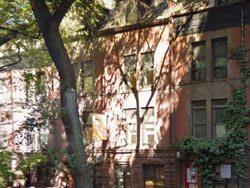
The Studio School was founded in 1971 and teaches students in preschool through eighth grade. Classes are taught from an interdisciplinary approach, fostering critical-thinking skills where students are challenged to solve problems creatively. The Studio School approach uses knowledge of child development and how children learn to create a curriculum that is designed to promote the natural intelligence of the child, while also developing its creativity. Students are taught to be original thinkers, not just critical thinkers. Every class strives for academic excellence in every student, developing not only the student's IQ, but also his or her social and emotional IQ.
Children are grouped with children of other ages within a two-year range with no more than 16 students in a classroom. All classes through second grade have a teacher and a teaching assistant. The environment of all classes is such that students are respected and are taught to respect one another. Character is taught as one of the most important attributes of every person, as well as individual integrity.
Students are not expected to learn in just one way, so every child's educational plan is personalized so that students learn to respect themselves, as well as others. Students are encouraged to mesh what they are learning with who they are. The academic program is strong to prepare children for the future.
The school is split into three parts: preschool, elementary school, and middle school. Elementary school encompasses first through fourth grades, while middle school encompasses fifth through eighth grades. Elementary students learn foreign languages, writing, scientific inquiry, reading, geography, history, art, PE, and the social sciences. They are encouraged to think about what they learn and to think and question things, while coming to logical conclusions that are well thought out.
There are approximately 115 students enrolled in the school. The student-to-teacher ratio varies depending on the child's age. The curriculum used is called Inscape. As part of the curriculum, students meet together with teachers and other staff members to discuss what the day holds, as well as thoughts and concerns. Students learn to be both speakers and listeners. This is one way that a feeling of community and mutual respect develops. On Friday afternoons, there is a Gathering where a different aspect of their studies is highlighted. Students work together or share what they have already accomplished in one of their classes. At least once a month students share their artwork or poetry with the rest of the school.
35 The Brighton School
(Lynnwood, WA)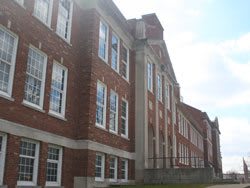
The year 2015 will bring the Brighton School to a new campus in Mountlake Terrace that will be larger and have more facilities to serve 400 students in grades pre-kindergarten through eighth, where students will have a meaningful experience in the STEM, arts, and athletics curriculum. The new campus will be like a park, but will have a separate wing for preschool and special facilities for music, art, and science laboratories, as well as a media center, an engineering/innovation lab, a multi-purpose room, several playgrounds, and an athletic practice field.
Brighton began in 1982 and it has consistently provided a safe environment where students will be provided a strong academic foundation and education in an atmosphere of community where all accomplishments are celebrated and students reach out to help the community at large through service projects. In addition to academics and service projects, students are exposed to other areas to develop the whole child, and not just the mind. All students in elementary school take drama, Spanish, art, PE, music, engineering, and technology. Middle school students are offered electives in painting, creative writing, robotics, drama, cooking, computer programming, and website design.
Students in third grade are afforded the opportunity to visit Mount St. Helens on a three-day expedition that includes learning about the geology of volcanoes. In addition, students go on trips within the trip to camp, hike, and explore the Ape Caves. Fourth-graders visit the Olympic Park Institute and Nature Bridge to study science in the International Biosphere Reserve. Fifth-grade students go to Camp Seymour on Puget Sound and learn about the wildlife of the area, as well as marine ecosystems. Additionally, they also camp, hike, and go canoeing. Sixth-grade students go Camp Orkila for five days in the Orcas Islands where they learn leadership skills and go through many physical challenges. Finally, eighth-grade students take a 10-day trip where they make stops in Washington, DC, Virginia, and New York as a finale for the history/government classes. In addition to visiting historical sites that they have studied in class, students get to see the nation's capital.
After school there are several clubs, activities, and camps for students to seek enrichment, fun, and school help. This includes a six-week ski school.
36 The Hillander School
(Midland, TX)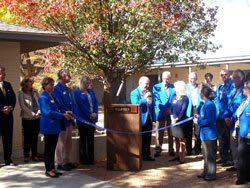
Pre-kindergarten through sixth-graders are educated at the Hillander School where teachers and staff endeavor to instill in all students positive habits, both personal and school-related, as well as self-esteem. The curriculum follows the method first laid out by Mae Carden in 1934. It is a progressive system that builds knowledge in each subject which is necessary before advancing to the next grade level. Reading is taught in such a way that students learn techniques for analytical and organized thinking so that they understand what they are learning and why. Phonics is also taught so that reading and spelling become second nature. Once students enter second grade, they are exposed to the more complex rules of phonics and grammar. Students read the classics and develop writing skills each year so that by the time they are in sixth grade, many of them are scoring on the level of a high school student when given standardized testing.
Students analyze words based upon the combination of sounds of letters and learn to choose the key word in each sentence. Eventually, students learn to summarize sentences, paragraphs, and chapters from a book. Students also are given lessons to improve their vocabulary and an understanding of grammar. The goal is to increase student comprehension and the desire of students to read independently. The goal is to make students self-reliant and confident readers.
Math is also progressive, with new concepts introduced each year after reviewing and reinforcing what students have already learned. By sixth grade, students are in pre-algebra. Foreign language instruction begins in kindergarten and is taught every year. Science begins in third grade and computer technology in the fourth grade. Students begin science in the third grade and in the fourth grade they begin taking classes in computer literacy.
Students in grades two through five go on a maximum of two field trips a year. First-grade students do not go on field trip; rather, guest speakers come to the school to address them. Sixth-grade students go on a maximum of five trips per year, not including visitations to a junior high the student is considering for his or her future. Field trips cannot be longer than half a day. All students return before the end of the school day.
The school educates almost 300 students per year and employs 20 full-time teachers. Classes have no more than 21 students. In fourth grade, students begin leaving their homeroom classroom and teacher to attend specialized classes.
37 The Cooper School
(Charleston, SC)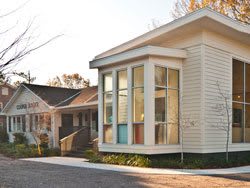
Although the Cooper School is a fairly young school (founded in 2007), it has had success in educating its 75 students with nine teachers. Students study French, Spanish, and Mandarin when they start school. By fourth grade, students may choose which language they wish to study further. They go from singing songs, having conversations, and learning about the culture, to reading, writing, and having dialogues. All students take a foreign language and they are exposed to it through their social studies class, as well. When they are not studying their foreign language in social studies, they are learning about the world through maps, world cultures, and artifacts of older cultures, so that by the time they are in the upper elementary grades, they are learning about the government and history of their language group, and how social studies are connected to the real world.
All students also study music, drama, and the visual arts. In the lower grades, students learn about colors, shapes, and lines, with their lessons frequently tied to their academic classes. Early elementary students sing and learn about rhythm and movement, which gives them the foundation to understand how dance is related to music. In the middle elementary grades students learn about different instruments and classical music. Upper elementary students learn to play the ukulele and how to compose their own music.
All students participate in physical education, which also encompasses health and fitness. Students learn yoga, movement, swimming, rock climbing, kayaking, and standing paddle board. In addition to PE, students have outdoor recess twice a day.
The child's character development is an important part of each child's education; therefore, students learn about controlling their emotions, establishing positive relationships, making responsible decisions, and learning to resolve conflicts appropriately and peacefully. Additionally, students are instructed in language arts, mathematics, and science. Teachers collaborate to keep the curriculum challenging, but not impossible. Students take benchmark tests based on the Common Core.
The school publishes on their website what students are learning weekly, so parents always have access to the curriculum. Instruction is not limited to the classroom and students may find themselves outdoors, conducting experiments in science, or inside tasting honey, after studying a unit on bees. Students learn the characteristics of different literary genres, and in third grade students write their own fairy tales. Every class reads a great deal and many lessons center around reading. Field trips are used to further classroom lessons. The second grade, for example, visits the Birds of Prey Conservatory after studying a unit on birds, and creates their own presentations about different birds.
38 Capitol Hill Day School
(Washington, DC)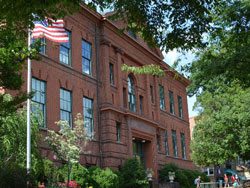
Serving pre-kindergarten through eighth grade students, Capitol Hill Day School is accredited by the National Association of Independent Schools. Founded in 1968, the school has an enrollment of approximately 225 students, with a student-teacher ratio of seven-to-one. In pre-kindergarten through fifth grade, there are two lead teachers. Students come from Maryland, Virginia, and the DC area. The school provides tuition assistance for 27 percent of its students.
CHDS provides over 300 field trips per year and subjects are cross-curricular, building on themes and concepts. Children begin learning French or Spanish while in preschool, and each class works on a parent-led community service project. After-school students can participate in Interscholastic Sports, receive tutoring, or take a variety of interest-related classes in chess, yoga, baseball, soccer, Tae Kwon Do, and/or music instruction. Bus transportation is available for some areas.
The elementary curriculum is project-based so that students are learning by doing rather than sitting in lecture after lecture and taking notes. Projects are collaborative, and in grades two through five the curriculum emphasizes critical thinking in a creative manner so that students can learn to solve problems and develop curiosity about what they are studying. Social instruction is integrated into a strong academic curriculum and students are taught to take responsibility for the well-being of their classmates, to respect them, and learn positive conflict resolution strategies.
Formal reading instruction begins with the first-grade students, but by fourth and fifth grade students are analyzing what they read for literary elements such as theme, plot, and setting. Students also begin writing formally in elementary school. Math is taught as a language and teachers show students the numerical relationships in patterns and try to teach them to solve problems creatively. Second- through fifth-grade students study a theme in an integrated curriculum of history, literature, science, math, art, music, and modern language.
39 Sandra E. Lerner Jewish Community Day School
(Durham/Chapel Hill, NC)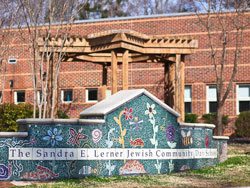
Established in 1995, the Sandra E. Lerner Jewish Community Day School of Durham/Chapel Hill has approximately 130 kindergarten through fifth-grade students and 33 teachers and staff members. There are four preschool classrooms and nine elementary classrooms. Additionally, the wooded property has a greenhouse, the Friendship Gardens, an outdoor classroom, and plant beds. Classrooms are equipped with state-of-the-art technology such as SmartBoards, computers, computer carts, and AlphaSmarts. There are three large playgrounds, track and soccer fields, basketball courts, and climbing platforms. Preschool starts at age two.
The Lerner School is open to children of the Jewish community whose parent(s) embrace the mission of the school.
In addition to core classes, Lerner teaches students the Hebrew language, PE, music, art, and Judaic studies through a values-based curriculum. The school is accredited by the Southern Association of Independent Schools and the Southern Association of Colleges and Schools.
Students may stay for after-school enrichment courses in yearbook, sports, crafts, homework club, music, art, free play, and many other activities and learning experiences. Beginning in fourth grade, students may join the band. Children in second through fifth grade may sing in the choir. International students make up approximately 25 percent of the student population and students come from Durham, Orange, and Wake counties.
The school gives individual attention to students in a collaborative learning environment. Students create and present projects such as self-written and produced plays, persuasive presentations, and extemporaneous speeches, all of which help build self-confidence.
To make sure all students are learning, the Gates MacGinte Assessment is administered to grades one and two and the Educational Records Bureau test to students in grade three through five. Student field trips include the Morehead Planetarium, the Nasher Museum, the Carolina Tiger Rescue, the Duke Homestead, and the Triangle Training Center. Fifth-graders go on a three-day trip to Washington, DC.
It is the Lerner method to train up one child at a time to reach academic excellence in a safe and diverse student body where a sense of community is shared by all. It is Lerner's hope that all students learn to become socially responsible and to approach problem-solving through ethical thinking.
The majority of students come from the Durham County area; however, there are students from both Orange and Wake Counties, as well. The majority of students have no dietary limitations, but there are students who are strictly kosher and those who are vegetarian.
Each year the school has special events that include a book fair, a Chanukkah Program, Poetry in Bloom, a 5K run, community family programs such as picnics, dinner, and Durham Bulls games, and a Lerner Carnival, as well as many others which help build a sense of community between staff, students, and parents.
40 Brookridge Day School
(Overland Park, KS)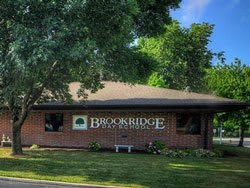
Brookridge is unique because it only educates children from the age of two-and-a-half through the third grade. It scores in the state's top five percent in reading and math. The school's commitment to quality education for early grades stems from its belief that a solid early education is vital to a student's learning foundation and will insure that students leave the school with the life skills they need to succeed as they advance through the upper grades. All teachers have teaching degrees in either elementary education or early childhood education. Some of the teachers are alumni and there is a very low turnover rate of teachers from BDS.
Kindergarten is a full day program with an emphasis on math, writing, reading, social studies, and science. Students learn to write with a program called Handwriting Without Tears. Students also practice speaking and listening skills each day. Additionally, they learn Spanish, art, PE, and music. Children experience special programs designed to help them grow physically and emotionally.
Students going into first through third grade have a program with a strong emphasis on math and reading. All subjects stress reading and writing, as well as listening and public speaking skills. The math program gives students real-life applications and focuses on eight practices of math. Students take an active part in technology-based lessons and learn about different types of software so that they will have a very functional grasp of computer skills. Lunch and a snack are included in the cost of tuition.
Before and after school, care is provided for the benefit of parents who have to leave for work early or get out of work late. The program is run by certified teachers, as well as qualified aids, so that students receive a high quality of care whether during, before. or after school. Teachers also contribute to a blog covering a wide variety of topics for the benefit of parents. The school publishes a newsletter every month, even in the summer.
41 The Tilden School
(Seattle, WA)
Tilden operates for approximately 104 students in kindergarten through fifth grade and is a Washington State Approved School. Students are taught listening skills and to be respectful to others who are talking and expressing their thoughts. All grades have the opportunity to work and play together. Students go on various field trips throughout the year.
The kindergarten curriculum combines play and work, usually with a theme that brings together several subjects. First grade focuses on developing social and academic skills. Students are given the opportunity to discuss subjects in a group and solve problems in various ways. Reading is further emphasized in second and third grade, as well as following directions and meeting deadlines. The goal is for students to be reading at the fourth-grade level or higher by the end of third grade. Other subjects are investigated in more depth. Fourth- and fifth-graders are not considered primary students, but intermediate students who focus on increasing basic skills and integrating the various subjects.
Students are given the opportunity to try various art and craft skills with a variety of media throughout their time at Tilden. The technical side of art is taught to students, as well, so that they develop artistic abilities and learn to appreciate different artistic works. The introduction to music prepares students to be in band, orchestra, and choir. Students learn rhythm, movement, and reading music so that they can perform in musicals and talent shows. Drama is also taught through a variety of dramatic media such as puppet plays, skits, holiday celebrations, and many others.
Physical education focuses on fitness, as well as active play, in the pursuit of acquisition of skills such as hand/eye coordination. All students are able to participate no matter their skill level or athletic ability. Learning the Spanish language begins in kindergarten and continues every year. The goal is to keep the speech in the class to 85--90 percent Spanish. Students in elementary school have a great ability to acquire language through speaking and hearing; the Spanish curriculum takes advantage of this natural ability, so that by the time students leave Tilden their oral fluency in Spanish will be profound.
In technology, intermediate students have advanced to the point that they are using online research tools. They are given access to the online Seattle Public Library, as well as subscription databases. Students are also taught about plagiarism and the proper way to cite sources.
42 Anneliese Schools-Willowbrook Campus
(Laguna Beach, CA)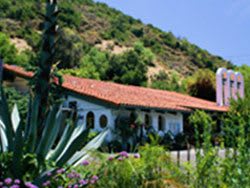
Students at ASWC begin learning foreign languages in nursery school. Beginning in kindergarten and continuing through the sixth grade, students are given formal lessons in both Spanish and German. Many courses are taught bilingually and all teachers are encouraged to incorporate foreign languages into their lessons. Teachers of the formal lessons are native speakers and students use textbooks obtained in Europe. Reading, writing, songs, games, art, and dialogue are all used to teach foreign language.
Anneliese Schools use the California teaching standards, but frequently exceed those standards, giving students a strong academic foundation. Behavioral and academic requirements are stringent, but thinking and playing creatively are also encouraged. The focus of an education at ASWC is the nine components of intellectual thought which includes social, artistic, and musical elements. The arts can jump-start children's creativity in thought and practice, broadening their ability to problem-solve and think analytically.
As part of their education, students go on mandatory field trips which are used as part of the curriculum and learning. Field trips are an important element in connecting classroom learning to real-world experiences. Students also learn outside in the school garden where students learn about biology and life cycles, as well as other interdisciplinary lessons in math, art, history, culture, and language. Students have lessons in theater, as well, which begin with story-telling and proceed to class plays and play-writing. Additionally, students have lessons in physical education and handcrafts, as well as formal classes in language arts, math, science, and social studies.
To help build community, students begins with The Circle, where school values are taught and conflicts are resolved. The Circle is conducted with multi-age groups. The after-school program continues the school day and ends with The Circle. The after-school program has many enrichment activities and subjects such as drama, crafts, cooking, and sports, to name just a few. Students are allowed to choose the enrichment class that is of most interest to them. They are also given time for free play, which is an important part of the child's day.
The Willowbrook campus has almost 400 students, from pre-kindergarten through sixth grade, and 20 teachers.
43 Summit Schools
(Cedar Rapids, IA)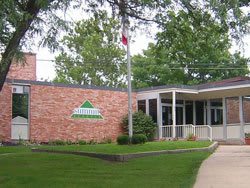
There are three programs at Summit Schools: the preschool program, the beginning program (which encompasses first and second grade), and the intermediate program (which encompasses the third, fourth and fifth grades). All students are taught to think critically and to ask questions through a curriculum that includes core classes, as well as technology, art, foreign language, and music. Students are taught strategies to help them help themselves in their development as lifelong learners. Parents work with teachers to create individual Student Growth Plans so that all students can learn at their own pace. All learning is multi-sensory.
Preschool and kindergarten students have their own school garden and have the opportunity to share their favorite books and build things. The program is designed to help students grow emotionally, physically, and socially.
First- and second-grade student learning involves parents and educational communities. The upper grades develop their creative problem-solving skills as they increase the complexity of their academic studies.
In the summer new preschool students (ages three through five) can sign up for a half-day to get a jump on the foundational learning for language, science, and math. Students will have a variety of learning centers to experience and will be exposed to a phonics program to help establish the alphabet in their minds as a foundation for reading. First- through sixth-graders have summer-long camps that help close the gap in academic areas such as reading, writing, and math.
A tutoring program designs individualized learning plans for students who need individual or small-group tutoring assistance. Tutoring is offered in reading, spelling, writing, math, algebra, geometry, and Spanish, as well as in study skills. Students can also receive tutoring help with their homework. While tutoring sessions are usually held Monday through Friday (between eight in the morning and seven at night), some Saturday sessions are available. Also, an award-winning online program called Dreambox is available to students to improve math skills.
Financial aid is available for student in pre-kindergarten through fifth grade.
44 Thales Academy of Wake Forest
(Raleigh, NC)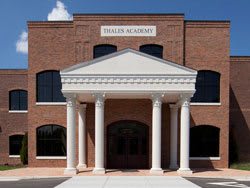
Thales is a kindergarten through ninth-grade school with over 530 students. Students in pre-kindergarten through fifth grade receive direct instruction, while students in grades six through 12 are taught through a classical curriculum and Socratic discussion. Multi-student discounts are offered for families who have more than one child attending school, and the school has one low, flat rate, without any additional fees or fund-raising. Students in grades K--7 are tested using the Iowa Test of Basic Skills and consistently out-perform other students in the state and nationally. Students are taught Latin and Spanish (as well as other languages) through blended learning, and the school culture emphasizes character education.
Students in grades K--8 use community iPads and Apple TV. Students are taught from a classical curriculum that helps them develop into critical thinkers. Direct instruction for the lower school includes grouping students by skill set, choral response, and rapid pacing. Students have access to iPads in class and there is also a computer lab. Students are offered a variety of electives, including band and public speaking, and clubs such as the Science Olympiad and Robotics.
By fifth grade, students in math will be adding and subtracting fractions, graphing, identifying patterns, and learning beginning geometry, basic algebraic equations, and how to use money with the Saxon Math program. In reading they will be able to identify different genres, read independently, identify meaning using context clues, analyze characters in stories, write, make predictions, and learn how to outline.
In science they will learn about erosion, food chains, the human body, the celestial bodies, electromagnetism, and lenses. In social studies they will learn about the Renaissance, the geography of the US, the lakes of the world, ancient Indian cultures, the Civil War, the Reformation, westward expansion, early Russia, and early Japan.
In Language arts they will be using Shurley English, 6+1 writing traits, thinking maps, and the Write from the Beginning programs. They will also learn the parts of speech, figurative language, prose and poetry, the writing process, grammar, spelling, and vocabulary development.
45 The Madison Waldorf School
(Madison, WI)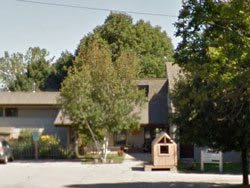
At the Madison Waldorf School, students in the early childhood classes are taught to express themselves creatively and artistically, while keeping in touch with the natural world. They engage in imaginative play, both inside and outside. Teaching students gardening, cooking, washing, and cleaning allows them to understand the role of cooperation in life. Students engage in singing and sharing during circle time and students are constantly exposed to the arts through watching puppet shows, sculpture, music, drawing, and watercolor. Many of these activities help students to develop motor skills. Students are put in a mixed-age setting to enhance learning and spend a significant amount of time in the natural world each day.
Students in grade school are encouraged to develop critical-thinking skills, artistic expression, athletic ability, and sound reasoning with which they will come to strong conclusions. Students learn painting, drama, movement, and other courses typically viewed as electives so that students will have the foundation on which they can build a college preparatory education.
Students do not use traditional textbooks from which to learn, but create a record of their work with an annual portfolio filled with their best work. It is by means of this portfolio that educators decide in which group a student should be placed. Children are placed in their classes according to age, but in second grade, students start attending blended classes, so second and third are together. Students stay together with their group throughout kindergarten through eighth grade. Students do not develop a work ethic by receiving grades, but by learning responsibility for their work. Students have a schedule to which they adhere, where the teacher takes the students through teacher-led, age-appropriate activities.
Children stay together with one group throughout their first through eighth grade education and learn to be part of a team, take care of others, and take responsibility for the work of the group. Good work habits are developed in each child through developing a sense of responsibility for their work. There is one teacher for each grade who teaches the core classes in the mornings. Some teachers may also teach specialty classes such as painting, woodworking, German, and sculpture or ceramics. In the summer the school offers two camps of four weeks each, where students can make pottery, go kayaking, swim, garden, or exercise through a yoga program.
46 Friends' School
(Boulder, CO)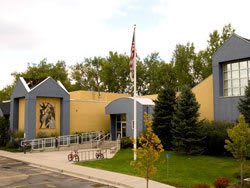
Preschool through fifth-grade students attend this secular school started by parents with an enrollment of almost 180 students. Created with the goal of educating the whole child and revering the child for who he or she is, the Friends' School teaches in small, collaborative, multi-age classes where students are taught to respect themselves and others. Each child receives a personalized education that holds students to a rigorous academic standard, but also gives each child an appreciation for the arts and a strong social/emotional foundation. The school is a member of the National Association of Independent Schools and has about 17 teachers who are experts in their fields.
Elementary classes focus on academics, but foster creative, critical thinking skills while teaching students to develop real-world solutions in an ethically responsible way. Students work individually, in groups, or as an entire class to solve problems that will help them understand the subjects they are learning. Teachers use technology, projects in art and drama, guest speakers, and field trips to enhance the classroom experience. In addition to core academic classes, students also are taught by specialists in the subjects of Spanish, music, PE, art, technology, and library. Children are taught to be accomplished writers and avid readers, with a strong foundation in math skills. Students leave Friends' School knowing how to communicate effectively and appropriately and to be independent thinkers.
In addition to core classes and specialist classes, the Friends' School teaches a social and emotional curriculum. It begins with teachers visiting the homes of all the new students in their classes so that the bond between child and teacher can begin even before that child walks through the school doors. When students do come to school, they begin and end each day with circle time, where students can share compliments or conc practice conflict resolution and role-play, or share something about themselves with the group.
As part of the social/emotional curriculum, students participate in community service projects which are often formulated by the students themselves, based upon their interests and concerns. Because students care about their world, they raise money for the humane society and to raise awareness about pollution and trash in the ocean and how it affects the ecosystem.
47 Triangle Day School
(Durham, NC)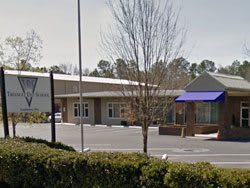
Integrity and respect are part of the education all students are required to assimilate. In addition, students are expected to learn the value of kindness and empathy. For themselves, they learn to take pride in their achievements and to celebrate the achievements of others. The school is kept small so that a sense of community will exist within this transitional kindergarten (TK) through eighth-grade school. Within that framework, all students are given the chance to lead, as well as the chance to serve. Because the school fosters an atmosphere of community, children from kindergarten routinely interact with students from upper grades in the hallways.
The school was founded in 1991 and has an average class size of 15, with a student-to-teacher ratio of seven-to-one. Twenty-two percent of students receive financial aid and the school has one class per grade for students in the lower school with an overall enrollment of 200. It is accredited by the Southern Association of Colleges and Schools and the Southern Association of Independent Schools, and is a member of the North Carolina Association of Independent Schools, the National Association of Independent Schools, and the Educational Records Bureau. The school is situated on a 17-acre campus with a gym, art studio with kiln, two science labs, a library, a computer lab, sets of iPads and Chromebooks, athletic fields, and two buildings of classrooms. Before-school and after-school enrichment programs are offered and every grade takes field trips.
The lower-school students have a choir and a co-curricular program of math, science, reading, writing, and social studies. Students also take PE, Spanish, art, music, and character education. Students also participate in community service, partnering with local organizations to combat hunger in Durham, and they gain environmental awareness through composting and growing things in the TDS garden. Generally, these programs are further divided between grades TK--2 and 3--5, so that all the programs build on knowledge and skills previously acquired in earlier grades. In sixth grade students are considered part of the middle school.
48 Nampa Christian School
(Nampa, ID)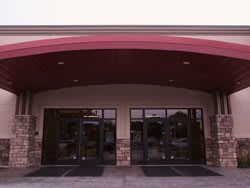
Nampa Christian School serves children from the age of six weeks through twelfth grade. The school is divided into four sections: the Early Childhood Center and the elementary, middle, and high schools. The elementary school teaches the core courses of reading, English, science, social studies, and math. Students participate in standardized testing, and score well above the state and national averages. In addition to the core courses, students study art, Bible, music and PE. Teachers are licensed and experienced.
Preschool teachers provide social and emotional support for development through games and learning centers. Students are introduced to the alphabet and numbers while having language acquisition stimulated through stories and songs. NCS believes in providing a quality education through a biblical worldview. In this way, students grow to be well-rounded so that they can meet the challenges they will face in college and beyond.
Nampa Christian School's history can be traced back to 1913. The school has undergone many changes over the last century, merging with other schools and moving locations and adding buildings. The elementary school building was raised in 1979 and then expanded in 1994. In 2008 the high school moved to a new location. Thus, the elementary and secondary campuses are maintained separately, though they are within three miles of each other and older students are given the opportunity to mentor the younger ones through fun activities such as the track meet for third- through fifth-graders, the pre-kindergarten through fifth grade field day, the annual Christmas program, the annual speech meet, and the Grandparents' Day program.
Part of the education students receive at NCS is through the Community Service Program in which students have the opportunity to serve others. Each student must complete three hours per quarter. In the summer NCS puts on a Musical Theater Camp, which is open to fifth grade through high school.
Nampa is approximately 22 miles west of Boise. The area is called the Treasure Valley, but is also known as the Lower Snake River Valley or the Boise River Valley.
49 Gig Harbor Academy
(Gig Harbor, WA)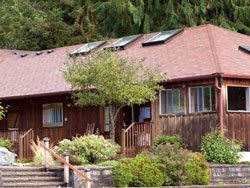
School at Gig Harbor Academy begins with preschool and goes through fifth grade. The campus is located next to wetlands on 10 beautiful acres with four buildings where children can become environmentally conscious and responsible. It is Gig Harbor's belief that children should get lost in learning, not lost in the crowd. The campus has an outdoor classroom, an archeological dig site, fitness and research trails, an athletic field, and large tree play areas.
It is the goal of GHA that students achieve academic excellence. Beginning in preschool, students are guided through the development of their social, physical, emotional, and intellectual growth by helping them to develop their language ability, through which they can express their opinions and learn to understand their world through exploration and observation. Pre-kindergarten takes these lessons a step further and helps students to interact properly with others and resolve conflicts in an acceptable way. All learning styles are accepted and celebrated. The pre-kindergarten is five days a week and lasts all day. Kindergarten is intended to be academically challenging to help students think positively about learning. The lessons cross the curriculum and use multi-sensory activities to help students learn through different media.
After kindergarten, students move into the elementary school where they will study the core subjects in more well-defined boundaries with programs such as the FOSS Science Kits, CAFÉ, and Junior Great Books. Each of these programs builds on itself each year. Once students reach third grade, they begin to explore the wetlands in the areas on campus so that they become more aware of the importance of the environment. Fifth-graders get to go to Washington, DC, and Colonial Williamsburg as part of their history study. Additionally, students study Spanish, art, technology, music, and PE in age-appropriate classes. In the summer, GHA offers several classes for student enrichment, including cooking, dance, ceramics, robotics, woodworking, soccer, and several other interesting programs.
50 Children's House Montessori
(Rapid City, SD)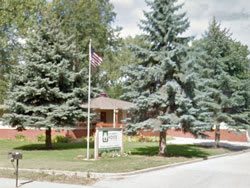
The school began with one class of five preschool children in 1990 and is now an elementary school with 135 students in five classes. In 2001, the school became a state-accredited school and follows the laws set forth for schools by the state of South Dakota, while using Montessori principles in teaching and curriculum. Vital skills necessary for learning in the later grades are instilled in the students and they begin to think abstractly as they grow older, exercising their analytical skills to compare, infer, analyze, and evaluate. Students are grouped within a three-year span, which encourages children to learn from one another but also promotes a community atmosphere.
The Montessori program hopes to increase student intelligence and encourage students to work for longer periods of time, taking satisfaction from their work. As students progress, they will learn to work independently and develop their curiosity, as well as their desire to learn. Each student has a written study plan for the day or the week that outlines the tasks that the child needs to complete. The children get to decide in what order they will complete these tasks and how much time they will spend on each task. Student progress is documented by the students themselves through self-evaluations and portfolios of student work. Students with developmental delays or difficulties might not succeed as well in this more unstructured environment.
Before-school care is offered for all grades. The school program uses a hands-on curriculum that is tailored individually for each student. It is intended to give children an unbreakable foundation in reasoning skills, analytical thinking, and creative problem-solving, as well as a love of learning. Students learn to work in small groups, as well as individually.
The school employs four full-time teachers and educates approximately 75 students in grades pre-kindergarten through fifth.
Featured Image Credit: Klaus Vedfelt | DigitalVision | Getty Images
Popular with our students.
Highly informative resources to keep your education journey on track.
Take the next step toward your future with online learning.
Discover schools with the programs and courses you’re interested in, and start learning today.

